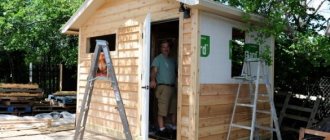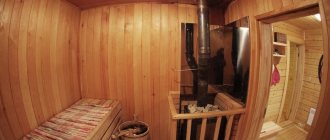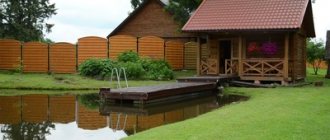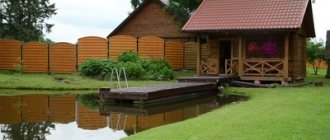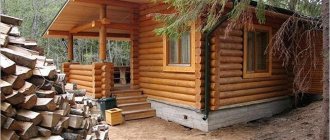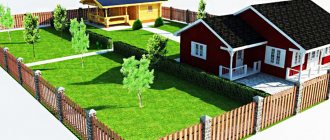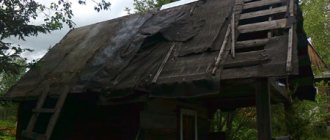Each owner of his own plot eventually asks questions about its improvement. In addition to the cottage, country house or other residential structure, outbuildings or other buildings are being erected. Often, owners build a bathhouse on their backyard or summer cottage. In the process of planning the construction of such a facility, it is important to consider the requirements of current legislation. The article contains the main provisions concerning the issue of building a bathhouse on your own site in 2021.
To register or not to register?
In Russia today, legislation simultaneously affects several branches of law, answering the question of whether it is necessary to register a bathhouse. It is important to take into account the requirements of housing, civil, tax, and land legislation relevant in 2021. In accordance with Art. 131 of the Civil Code of the Russian Federation, real estate requires mandatory state registration . But it is also worth considering that the bathhouse can be considered as:
- Temporary building. In this case, registration is not required.
- Real estate. Registration is required.
The difficulty is that it is difficult to determine what signs a bathhouse has. According to Art. 130 of the Civil Code of the Russian Federation, there are 2 main characteristics of real estate:
- Inextricably linked to the earth.
- Cannot be separated from the soil without causing great damage.
In other words, if the building is not temporary, it has a foundation, communications are connected, there are strong supporting structures, registration is required. In most cases, a bathhouse on the site must be registered.
New registration rules
On March 1, 2021, new property registration rules enshrined in Law No. 340-FZ came into force. Capital construction can be legalized only after the construction (planned or completed) has been approved by the local administration. If construction work has not been completed by March 1, 2021, it is mandatory to notify local authorities.
Permits will have to be obtained if the bathhouse is combined with a cottage or other residential building. If it is planned to build a commercial bathhouse on the site, its registration is also mandatory.
On what site is it allowed to build a bathhouse?
You can plan the construction of a bathhouse on the following types of sites:
- Land in cities of various sizes, villages, villages, intended for individual housing construction.
- Privately owned plots on which there is a subsidiary plot, used for personal agricultural work.
- From January 1, 2021, dacha lands will be abolished. Therefore, according to Law No. 217-FZ of July 29, 2017, permanent buildings can be erected on garden lands, and only utility and temporary buildings on garden lands.
A project is being prepared for future development. After its consideration, a decision is made on the need for registration. Only after receiving the appropriate documentation will the owner be able to legally perform the necessary actions with real estate (sale, donation, inheritance, etc.).
Penalties for non-compliance
Current legislation provides for penalties for owners who do not comply with these norms and requirements. If they are ignored, penalties may be applied to the person:
- administrative responsibility;
- fines;
- mandatory demolition of structures that do not meet the standards.
Compliance with the rules is not just an obligation, it is an opportunity to develop a site comfortably and safely. Regulations are created to protect people from many problems. By ignoring the rules, you endanger yourself and your loved ones.
The Render House company is engaged in the construction of turnkey cottages in compliance with all norms and requirements. To get advice and choose a project, call the phone number in the site header.
Basic construction requirements
When planning and constructing a bathhouse, you must be guided by construction, sanitary standards, and fire safety regulations . Otherwise, operation of the facility will be unsafe. The basic rules are specified in SNiP 30-02-97 with amendments relevant in 2021. The bathhouse must meet the following requirements:
- Located at a distance of at least 1 m from the neighbors' property.
- The object is located at least 15 m away from wooden buildings (including buildings and structures of neighbors).
- The bathhouse is located at least 8 m from the residential building.
- A distance of at least 15 m should be maintained to the forest area. There should be a distance of at least 4 m to tall trees on the site, and at least 1 m to shrubs.
- The bathhouse is located at a distance of 22 m or more from the reservoir.
- The structure is erected from a well or borehole at a distance of 12 m. The drainage can be organized into a septic tank. The autonomous sewer system is located at least 1.5 m away from the neighboring plot.
- The building is located at a distance of at least 5 m from the red line. The building must be at a distance of 6 m from the roadway.
It is advisable to choose an elevated area for building a bathhouse. This will prevent flooding of the structure. In the process of preparing a construction plan, the location of communications on the site is taken into account. There should be no electricity, gas, water supply or other engineering systems running under the bathhouse.
Standard distances from the bathhouse to the neighbor's fence
Schematic representation of the correct location of all buildings
When building a country house, owners often plan to build a bathhouse. It would seem that all you need for this is materials and a place on the site, but in the process of choosing a place, problematic questions may suddenly arise: at what distance from the fence can you build a bathhouse? For example, how many meters to retreat from the fence.
It should be noted that you cannot build a bathhouse wherever you want. Today, there are very specific rules for site development. These rules are specified in detail in SNiP.
However, in addition to the general requirements set forth in SNiP, there are also local standards. Ignoring the norms and requirements of SNiP can lead to conflict situations with neighbors and even legal disputes. And it is extremely rare in such cases that the court takes the side of the defendant who built the bathhouse in violation of SNiP. As a result, the defendant will be forced to pay fines and even possibly moral damages to neighbors. And sometimes there is also material damage if the property of neighbors is damaged due to a fire.
It is for this reason that it is possible to lay the foundation for a bathhouse only after a thorough study of all the requirements of SNiP, as well as the relevant documentation, which concerns the standard distance from the bathhouse to the fence and buildings on the site.
Sketch of the minimum distance between buildings
People own different plots. The area of a large plot gives greater freedom in the location of buildings. But even for the largest areas, the same general requirements apply. In small areas, you will even have to calculate the minimum permissible distance to the required buildings by centimeters. Therefore, it is necessary to know about the norms for the location of buildings relative to the fence, how much you need to retreat from the neighbor’s fence in order to avoid conflicts later.
Owners of country houses always strive to use any area of the site with maximum benefit. Therefore, planning a bathhouse should include the first point of studying the norms and laws regarding how much you need to retreat from your neighbors’ fence, relative to the norm.
Reasons for introducing restrictions
Consequences of violations of standards
A classic bathhouse may have a number of features that significantly affect the placement of the building on the site. When using wood or coal heating, for example, you will need to ensure that smoke from the bathhouse chimney never gets into the windows of nearby houses. This not only threatens fines, but is also fundamentally dangerous for the health of people living in houses next to the bathhouse:
- If the bathhouse does not have a high-quality drainage pit and there is no sewage system, then there will also be a problem with the drains, since according to the norm they should not fall into the territory of someone else’s property, and it is also unacceptable for the drainage water from the bathhouse to wash away the fundamental foundations of buildings located nearby. For this purpose, SNiP standards have been introduced.
- In the event of a fire, the distance between buildings also plays an important role. If the distance is unacceptably small, then the fire will very quickly spread to all nearby buildings, and the fire can cause significantly more damage than in the case of a large distance between buildings.
- The distance from the bathhouse to the fence often depends on the materials used to build the bathhouse, as well as on the arrangement of the bathhouse itself, the presence of a separate drainage pit or a certain type of heating.
Regarding the legal norm, a classic bathhouse cannot be located closer than three meters from the fence. In this case, the bathhouse must meet all fire safety requirements. It is also unacceptable to shade the neighbor's property. But even if at a distance of 3 meters the wastewater flows onto the neighbors’ property, you should think about creating a drainage hole, since this can create real problems for the owner of the bathhouse, and what distance is best to choose from the fence. A drainage hole allows you to save space near the fence, where you can set up a front garden, for example.
Fire safety requirements
There is heating equipment in the bathhouse, so when constructing and arranging the facility, it is important to strictly comply with fire safety requirements. To avoid fire, property damage, harm to health or a threat to human life, it is important to consider the following:
- All wooden structural elements are treated with a fire retardant before assembly. Resinous wood species are not used in the steam room. Otherwise, when heated, the natural material will release resin on heated surfaces. If it comes into contact with the skin, it leaves serious burns.
- The ceiling and the stove smoke exhaust pipe are insulated with non-combustible materials.
- The floor and walls adjacent to the stove are lined with protective heat-resistant screens. A metal sheet with dimensions 650x750 mm is installed in front of the firebox.
- Elements that generate heat in the stove must be at least 120 mm from the floor.
- The bathhouse must have natural or forced ventilation.
- There must be a fire extinguisher in the building.
- The wiring is installed openly in special closed boxes. All electrical appliances are grounded. The wires have special self-extinguishing insulation.
Registration procedure
Regardless of the location of the bathhouse (in a populated area or SNT), the owner must perform a number of sequential actions:
- Before starting construction and installation work, send a notification to local authorities. The document indicates the plan and design features of the bathhouse. Attached are extracts from the Unified State Register of Real Estate and a technical plan. It is also important to prove ownership of the land (relevant documents are attached). You can contact local authorities in person, send documents by registered mail or using the MFC.
- Authorized persons check the compliance (non-compliance) of the planned facility with urban planning standards. The possibility of carrying out construction work on the specified site is also determined. If within 7-10 days the local government authorities do not respond to the appeal, the submitted plan is regarded as complying with the established standards. It can be used to build a bathhouse for 10 years.
- After completion of construction, no later than a month later, a second notification letter is sent to the local administration. Attached to it is a receipt confirming that the state duty has been paid. This is necessary for registering the property. The first notice and the documents sent along with it are also attached.
- The submitted documents are re-checked. The local administration sends information to Rosreestr to register ownership of the house.
If the owner of the site wants to speed up the registration process, you can send the relevant documents to Rosreestr after completion of construction yourself.
It is worth considering that the grounds for refusal may be a violation of building codes and regulations, or the lack of attached relevant documentation in circulation. In this case, the construction can only be legitimized in court.
Lawyer's answers to private questions
A neighbor built a bathhouse close to my site, and besides, the slope of the roof is directed in my direction, causing snow and rainwater to flow onto my land. Where should I go to solve this problem?
You can file a complaint with the administration or prosecutor's office about illegal construction, as well as go to court. But before contacting the authorities, send a written request to your neighbor to eliminate the violations by registered mail.
Where to apply for a permit for a bathhouse if new neighbors complain that the construction is illegal, although it is in the BTI plan?
First contact the administration of your city with a request to legalize the design, and then go to court.
There is an old bathhouse, which was built on the adjacent territory of an apartment building. Recently, a neighbor complained about an illegal construction, and I received a notice of a fine of 5 thousand rubles. What do you think is easier: pay a fine and then legalize the bathhouse, or is it easier to demolish it?
If it is built on the territory of an apartment building, you will not be able to legalize it, especially since at least one neighbor is against it. Better demolish the structure and avoid the risk of repeated fines.
We added a bathhouse to our house wall to wall. The distance to neighbors is 5 meters, the size of the plot is 10 acres. Is it possible to get permission for it now or will I have to demolish the bathhouse as an illegal building?
If the distance requirement from neighbors is met, there is no reason for demolition. Contact the BTI, obtain technical and cadastral passports and register ownership in Rosreestr.
A neighbor built a dacha right next to my fence, it shades my area, and besides, smoke from the steam room is constantly coming towards me. What to do?
There are obvious violations of construction standards, so you can complain to the administration or file a lawsuit. In each case, the neighbor will be required to demolish the illegal building or remodel it in accordance with construction standards.
Package of documents
To register a bathhouse on your own site, you will need to collect a package of documents. It includes:
- Application of the established form indicating the address where the building will be located.
- Documents certifying ownership of the plot (extract from the Unified State Register of Real Estate, certificate of title, contract).
- Passport of the owner (representative of the owner and power of attorney) or other identification document.
- Boundary plan of the land plot.
- Construction permit.
- Project documentation. The document specifies the necessary technical information (dimensions, number of premises, building materials, heating equipment and other categories of construction).
- List, location of utilities that are suitable for the building. Scheme, type, location of wastewater disposal systems, drainage system.
- Receipts for payment of state fees.
Laws and rules for the location of buildings
To avoid unnecessary questions, we note that the current standards were created taking into account the experience of operating structures and were developed specifically to ensure the safety of health and life. That is, you need to follow the norms not because someone just invented them, this is a real necessity that can save you a lot of nerves, strength and health.
All standards for the location of the house and other structures on the site, which we will talk about, are mandatory or advisory in nature. The first ones must be fulfilled, the second ones - at the request of the owner. The latter include, for example, requirements that were previously in force but were cancelled.
